AI roll-ups represent investment strategies emerging in today’s new world! This concept is combining traditional private equity consolidation with artificial intelligence automation to create value. We’re talking about transforming how investors think about business consolidation, offering the potential to achieve software-like margins in traditionally low-margin service industries.
AI-Driven Business Consolidation: The New M&A Frontier
Understanding the AI Roll-Up Model That’s Taking Over
AI roll-ups are fundamentally different from traditional software companies. Instead of trying to sell tools to reluctant industries, they acquire businesses outright and transform them from the inside out! The strategy involves systematically purchasing small, cash-flowing businesses within specific niches and deploying AI systems to automate routine tasks, optimize pricing, and enhance operational efficiency.
Here’s where it gets exciting: this approach can dramatically increase gross margins from 10% to 40% or higher by reducing labor costs and improving productivity. We’re talking about turning traditional service businesses into efficiency powerhouses!
The market opportunity is absolutely massive. Service-based industries employ approximately half of the American workforce and contribute roughly 44% of GDP while remaining largely analog. These sectors have been slow to adopt advanced technologies, creating enormous arbitrage opportunities for AI-enabled consolidators who move fast and execute smart.
This connects perfectly with what we discuss in our comprehensive guide on Business Strategy: Linking AI to Measurable Success Metrics, where strategic AI implementation drives measurable business outcomes.
Prime Target Industries for AI Roll-Ups
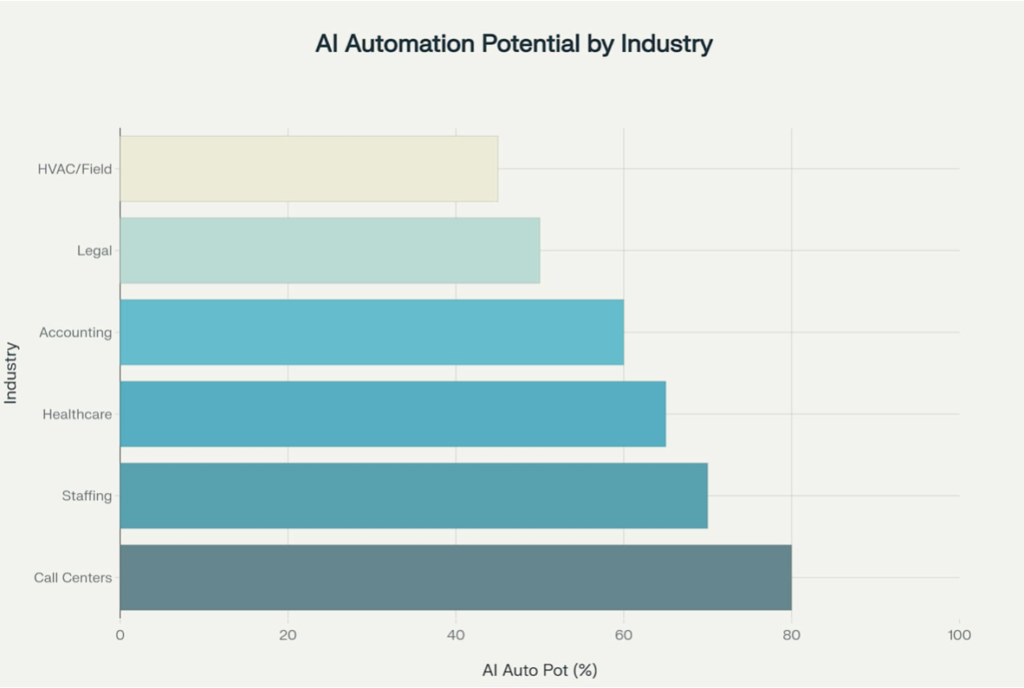
The most attractive sectors for AI roll-up strategies share common characteristics: high fragmentation, labor-intensive operations, and significant automation potential. Let me break down the goldmines:
The staffing industry exemplifies this incredible opportunity! We’re looking at a $200 billion market with over 23,000 agencies in the US, where only about 200 companies generate more than $100 million in annual revenue. Talk about fragmentation and consolidation potential!
AI Automation Potential Across Target Industries:
Call centers and customer support operations present exceptional automation potential, with AI capable of handling up to 80% of routine interactions. Healthcare administration and accounting firms also offer substantial opportunities, with AI automation potential reaching 65% and 60% respectively. Field services including HVAC, plumbing, and electrical work can benefit significantly from AI-powered route optimization and predictive maintenance.
The numbers don’t lie, and the opportunity is staring us right in the face!
Key Strategies for Growth Maximization
Intelligent Process Automation: The Foundation of Success
The foundation of successful AI roll-ups lies in identifying and automating the most labor-intensive processes. Modern AI systems excel at customer service automation, with chatbots and virtual assistants handling inquiries 24/7 while reducing labor costs by up to 70%.
Document processing through natural language processing can reduce legal review time by 60-70%, while predictive analytics improve operational efficiency by 20-30%. This is where the magic happens and margins explode!
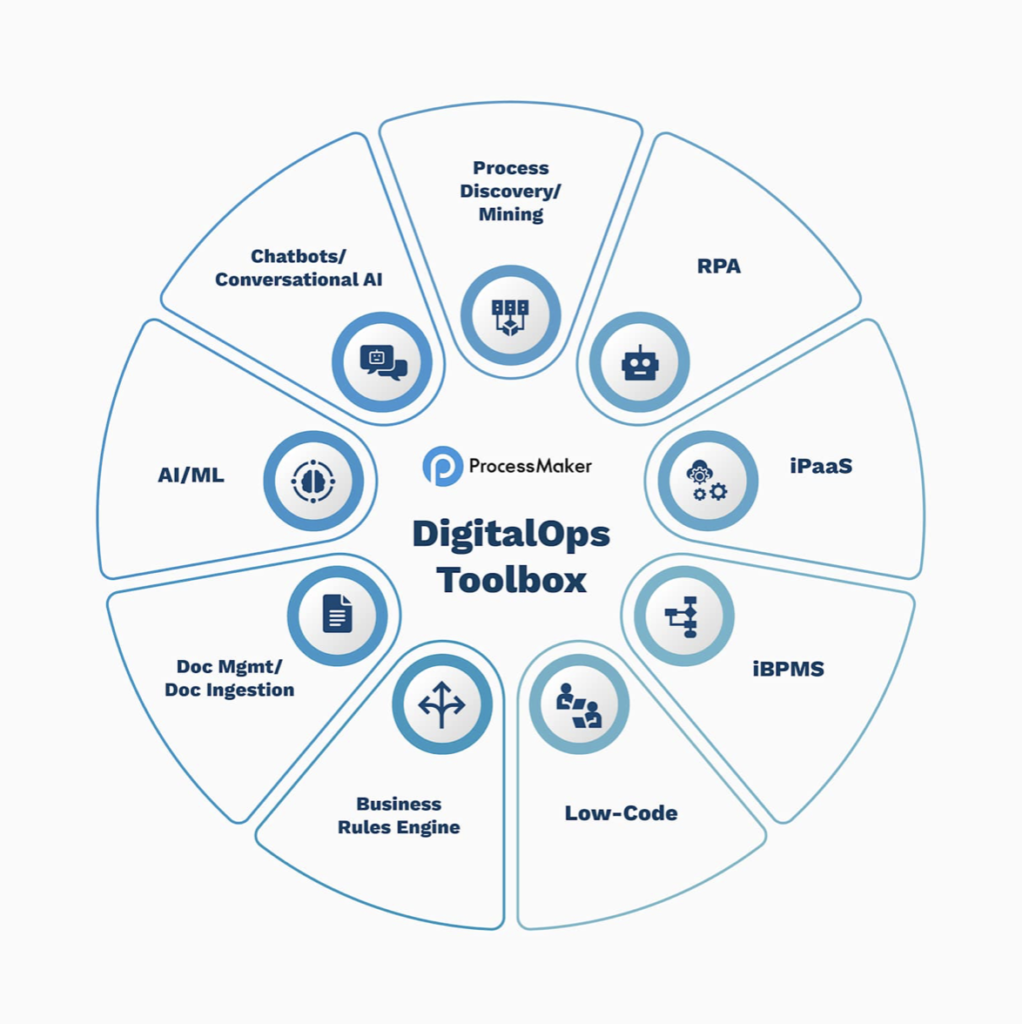
The DigitalOps Toolbox, outlining key components for business process automation.
For organizations looking to build this foundation, our detailed analysis in AI Implementation Roadmap: Transforming Organizations Through Strategic AI Adoption provides the strategic framework you need.
Data-Driven Competitive Advantages That Compound
Here’s where AI roll-ups possess a unique advantage that gets me fired up: access to comprehensive data across multiple acquired businesses! This aggregated dataset becomes increasingly valuable with each acquisition, creating powerful network effects and competitive moats that competitors can’t touch.
Unified analytics platforms enable sophisticated cross-business insights that individual companies could never achieve. Every new acquisition doesn’t just add revenue; it adds exponential data value that makes the entire portfolio smarter and more competitive.
Scalable Technology Infrastructure: Building the Engine
Building robust, scalable technology infrastructure is crucial for maximizing AI implementation value across multiple acquisitions. Centralized AI platforms can be rapidly deployed across new acquisitions, reducing integration time and costs while accelerating value creation.
API-first architecture enables seamless integration with existing business systems, while cloud-native solutions ensure scalability and cost-effectiveness as portfolios grow. This infrastructure approach aligns with the principles we outline in Beyond the Quick Win: Why Your Business Needs AI Infrastructure, Not Just AI Agents.
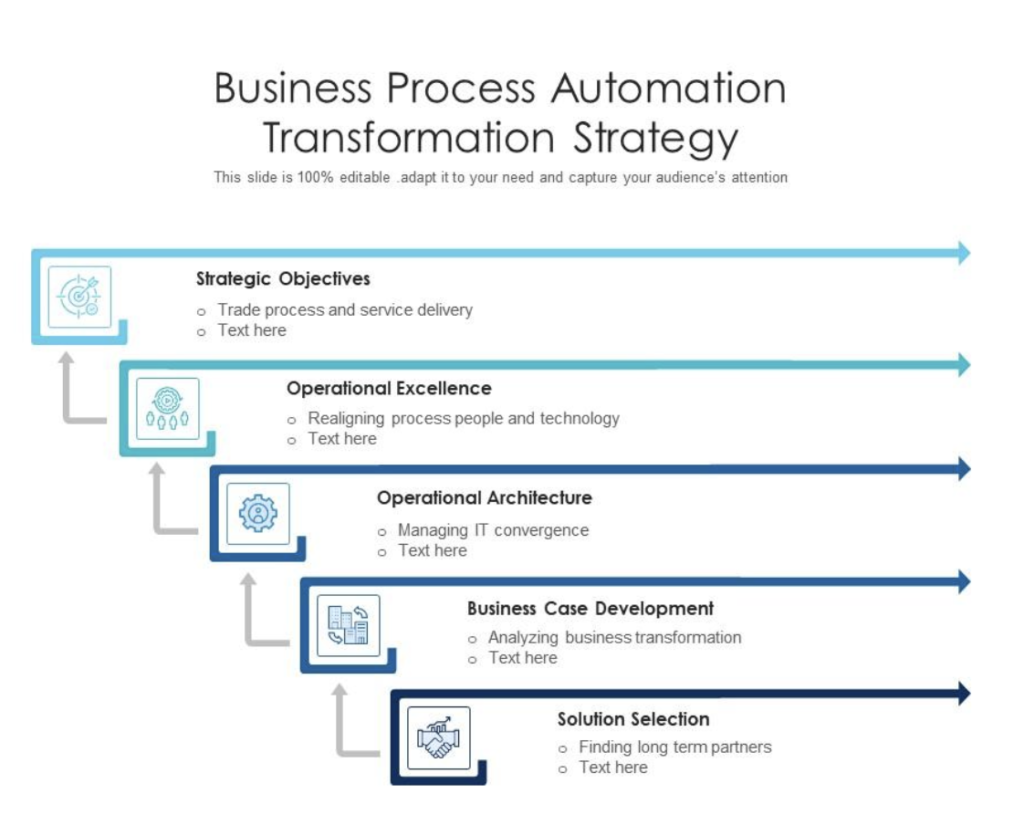
Diagram outlining a business process automation transformation strategy.
Financial Performance and Value Creation That’ll Blow Your Mind
The financial trajectory of AI roll-ups demonstrates compelling value creation potential compared to traditional consolidation strategies. Get ready for these numbers!
Well-executed AI roll-ups typically show 15-25% margin improvement in year one, expanding to 40-50% by year two as advanced AI systems mature. By year three, margins can approach 60-70% as businesses operate with software-like efficiency. We’re talking about transforming traditional service businesses into high-margin technology companies!
Investment Requirements vs. Return Potential:
Investment requirements include $500K-$2M for comprehensive AI platform development, $200K-$500K annually for AI specialists, and $100K-$300K per acquired business for system integration. However, the return potential justifies these investments completely!
Successful AI roll-ups generate 25-50% annual revenue growth and achieve 5-10x investor returns over 5-7 year holding periods. The margin expansion journey from traditional services to software-like economics represents a fundamental transformation in business model economics.
This strategic approach to measuring and maximizing ROI ties directly into our framework for Defining Success Metrics for AI Agent Projects: A Strategic Approach.
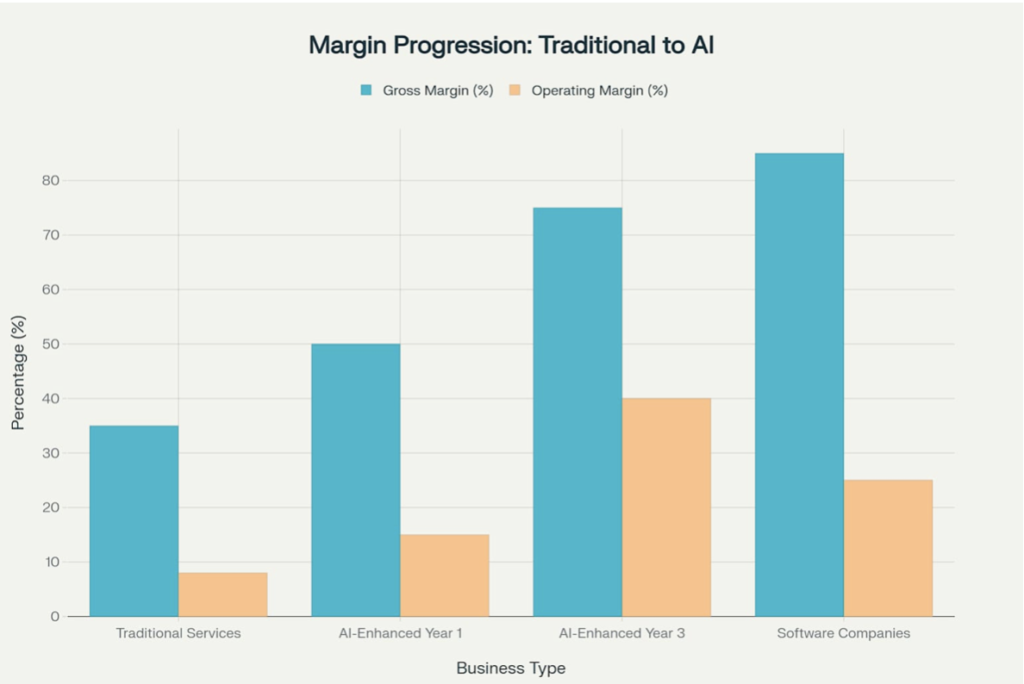
Margin Expansion Journey: From Traditional Services to Software-Like Economics
Implementation Framework and Best Practices
Successful AI roll-up implementation follows a structured four-phase approach that gets results fast:
Phase 1 (Months 1-3): Comprehensive workflow analysis and opportunity identification Phase 2 (Months 4-9): Deploy foundational AI platforms and automate highest-impact processes
Phase 3 (Months 10-18): Implement advanced optimization and cross-business synergies Phase 4 (Ongoing): Establish continuous innovation and refinement processes
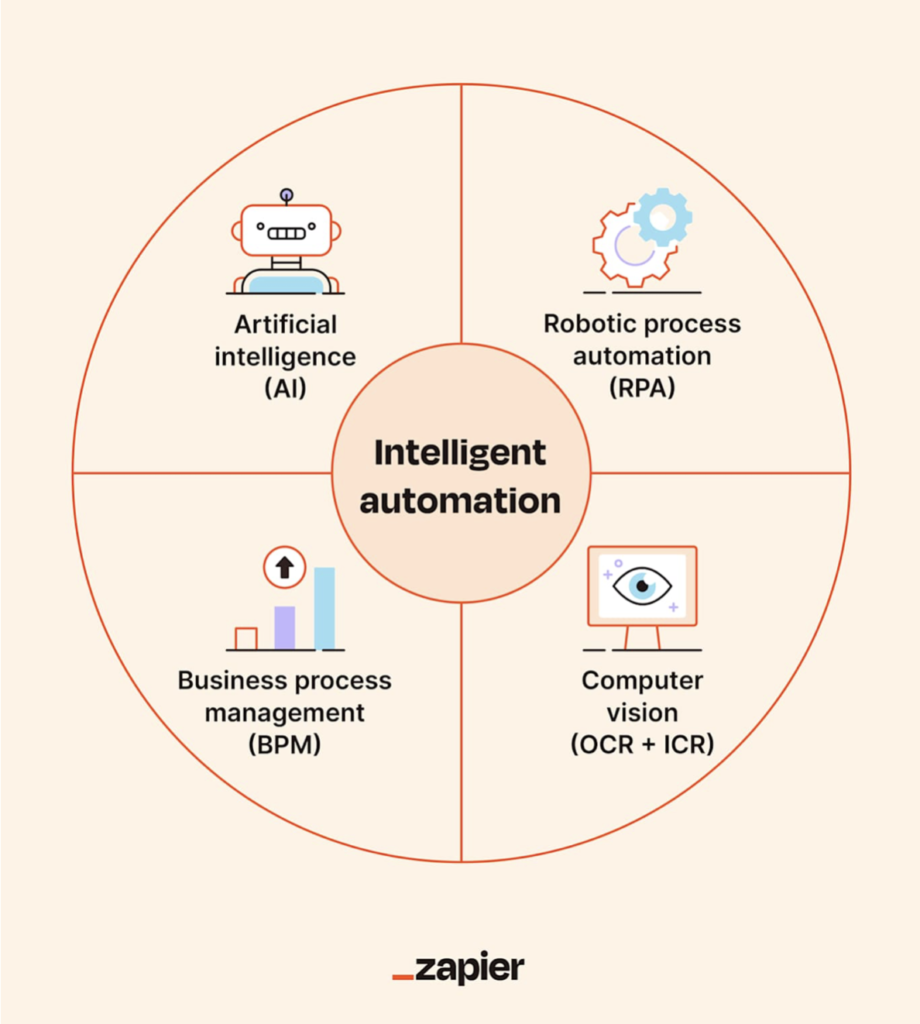
Components of Intelligent Automation, including AI and Robotic Process Automation
Critical Success Factors:
Strong leadership that understands both traditional operations and cutting-edge technology is absolutely essential. Cultural change management proves crucial, as AI implementation requires significant organizational adaptation. Data quality investments are critical since AI systems are only as effective as their input data.
For organizations looking to build these capabilities, our guide on Integrating AI with Your Overall Business Strategy: A Holistic Approach provides the comprehensive framework needed for success.
Market Outlook and Investment Landscape
Major venture capital firms including General Catalyst, Thrive Capital, and Khosla Ventures are pioneering AI roll-up strategies, and they’re moving fast! General Catalyst has already backed seven AI roll-up companies, including Long Lake, which has secured $670 million in funding since its founding less than two years ago.
Thrive Capital has raised $1 billion for a permanent capital vehicle dedicated to acquiring and transforming legacy businesses with AI. When the smart money moves this aggressively, you know something big is happening!
The competitive landscape is evolving rapidly, with increased investor interest driving up valuations for attractive acquisition targets. However, the window of opportunity remains significant for early movers who can execute effectively. As AI adoption accelerates and competition intensifies, the most attractive opportunities will be claimed by those who act decisively.
Risk Management and Regulatory Considerations
AI roll-ups face several key risks that require smart management. Operational complexity increases significantly when managing multiple acquisitions while implementing AI transformation. Cultural resistance in legacy industries with entrenched workflows presents ongoing challenges that need athletic-level persistence to overcome.
Regulatory compliance becomes increasingly important as successful AI roll-ups may attract scrutiny around market concentration and AI ethics.
Risk Mitigation Strategies:
Diversify portfolios across multiple industries, implement AI gradually to reduce execution risk, and maintain backup systems during transitions. Stay ahead of evolving AI regulations to ensure all implementations comply with relevant standards.
This risk management approach connects with the governance frameworks we detail in AI Governance: Future Trends and Strategic Roadmap.
The Championship Strategy for AI Roll-Up Success
For investors and entrepreneurs seeking to maximize growth and market value through AI roll-ups, the execution game plan is everything! The future of business consolidation lies in the successful integration of proven private equity techniques with cutting-edge artificial intelligence capabilities.
Those who can effectively combine the art of business building with the science of AI will create the most valuable and transformative enterprises of the next decade. This isn’t just about technology; it’s about reimagining entire industries and creating sustainable competitive advantages that compound over time.
The opportunity is massive, the technology is ready, and the market conditions are perfect. What are you waiting for?
Ready to explore how AI roll-up strategies can transform your investment approach? Contact Curated Analytics today to learn how we can help you evaluate, structure, and execute AI-driven consolidation strategies that deliver exceptional returns.
Let’s turn traditional businesses into AI-powered growth engines!
FAQ
What exactly are AI roll-ups and how do they differ from traditional business consolidation strategies?
AI roll-ups combine traditional private equity consolidation with artificial intelligence automation to create unprecedented value. Unlike traditional consolidation that focuses mainly on cost synergies and scale, AI roll-ups systematically purchase small, cash-flowing businesses and deploy AI systems to automate routine tasks, optimize pricing, and enhance operational efficiency. This approach can increase gross margins from 10% to 40% or higher by reducing labor costs and improving productivity, essentially transforming service businesses into technology companies with software-like margins.
Which industries offer the best opportunities for AI roll-up strategies and what makes them attractive targets?
The most attractive sectors share three characteristics: high fragmentation, labor-intensive operations, and significant automation potential. Prime targets include the staffing industry ($200 billion market with 23,000+ agencies), call centers (80% automation potential), healthcare administration (65% automation potential), accounting firms (60% automation potential), and field services like HVAC and plumbing. These industries have remained largely analog while employing significant portions of the workforce, creating massive arbitrage opportunities for AI-enabled consolidators.
What kind of financial returns can investors expect from successful AI roll-up strategies?
Well-executed AI roll-ups demonstrate compelling financial trajectories with 15-25% margin improvement in year one, expanding to 40-50% by year two, and approaching 60-70% margins by year three as businesses achieve software-like efficiency. Investment requirements include $500K-$2M for AI platform development and $200K-$500K annually for specialists, but successful AI roll-ups generate 25-50% annual revenue growth and achieve 5-10x investor returns over 5-7 year holding periods, significantly outperforming traditional consolidation strategies.
What are the main risks associated with AI roll-up strategies and how can they be mitigated?
Key risks include operational complexity from managing multiple acquisitions during AI transformation, cultural resistance in legacy industries, and potential regulatory scrutiny around market concentration and AI ethics. Risk mitigation strategies involve diversifying portfolios across multiple industries, implementing AI gradually to reduce execution risk, maintaining backup systems during transitions, and staying ahead of evolving AI regulations. Strong leadership with both operational and technology expertise, plus comprehensive change management, are essential for success.
How should investors evaluate and prioritize potential acquisition targets for AI roll-up strategies?
Investors should conduct comprehensive workflow analysis to identify automation opportunities, prioritize businesses with standardized, repetitive processes that offer highest AI automation potential, and evaluate data quality and system integration feasibility. Focus on fragmented markets with numerous small players, assess cultural readiness for technology adoption, and analyze competitive positioning post-automation. Successful AI roll-ups begin with integration-friendly use cases while building internal capabilities, then expand to more complex automation as the platform matures and proves value across the portfolio.

